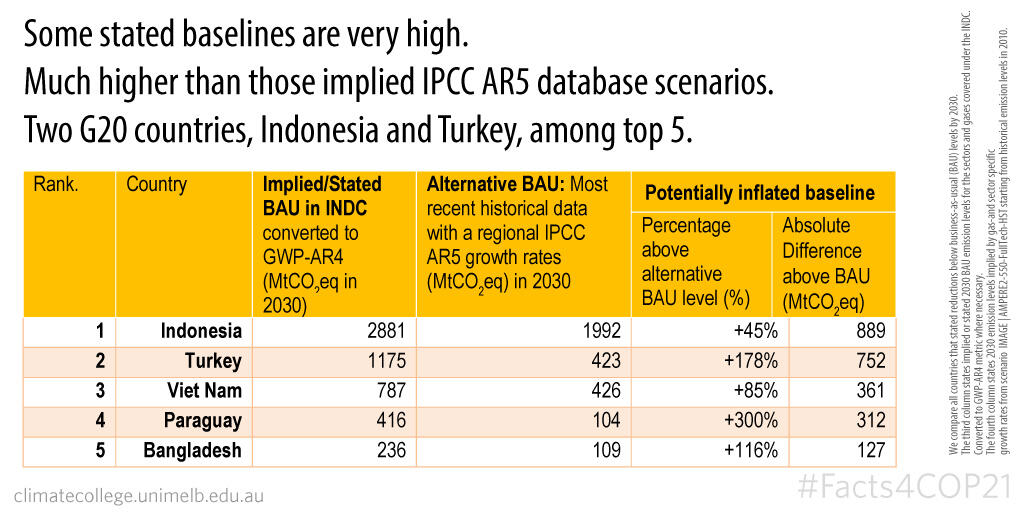Facts4COP21: Inflated baselines make some INDCs seem more ambitious

For developing countries, INDC targets are often expressed as reductions with respect to projected business-as-usual (BAU) emissions. That is, these countries intend to reduce their emissions compared to what would have happened under a scenario of 'no climate policy'.
In these circumstances, the chosen BAU projection is highly relevant. In some INDCs, the BAU is explicitly stated, in others it is merely implied.
For every country that has put forward an INDC target with respect to BAU emissions, we compared the implied or stated BAU emissions trajectory with the BAU emissions trajectory consistent with the most recent historical data and growth rates from the IPCC's fifth assessment report.
We found that Indonesia and Turkey have announced baselines that may be inflated by as much 889 Mt CO2e and 752 Mt CO2e, respectively.
Paraguay may have inflated its baseline by as much as 300%.
Inflating baselines can lead to 'hot air' being injected into the climate negotiations.